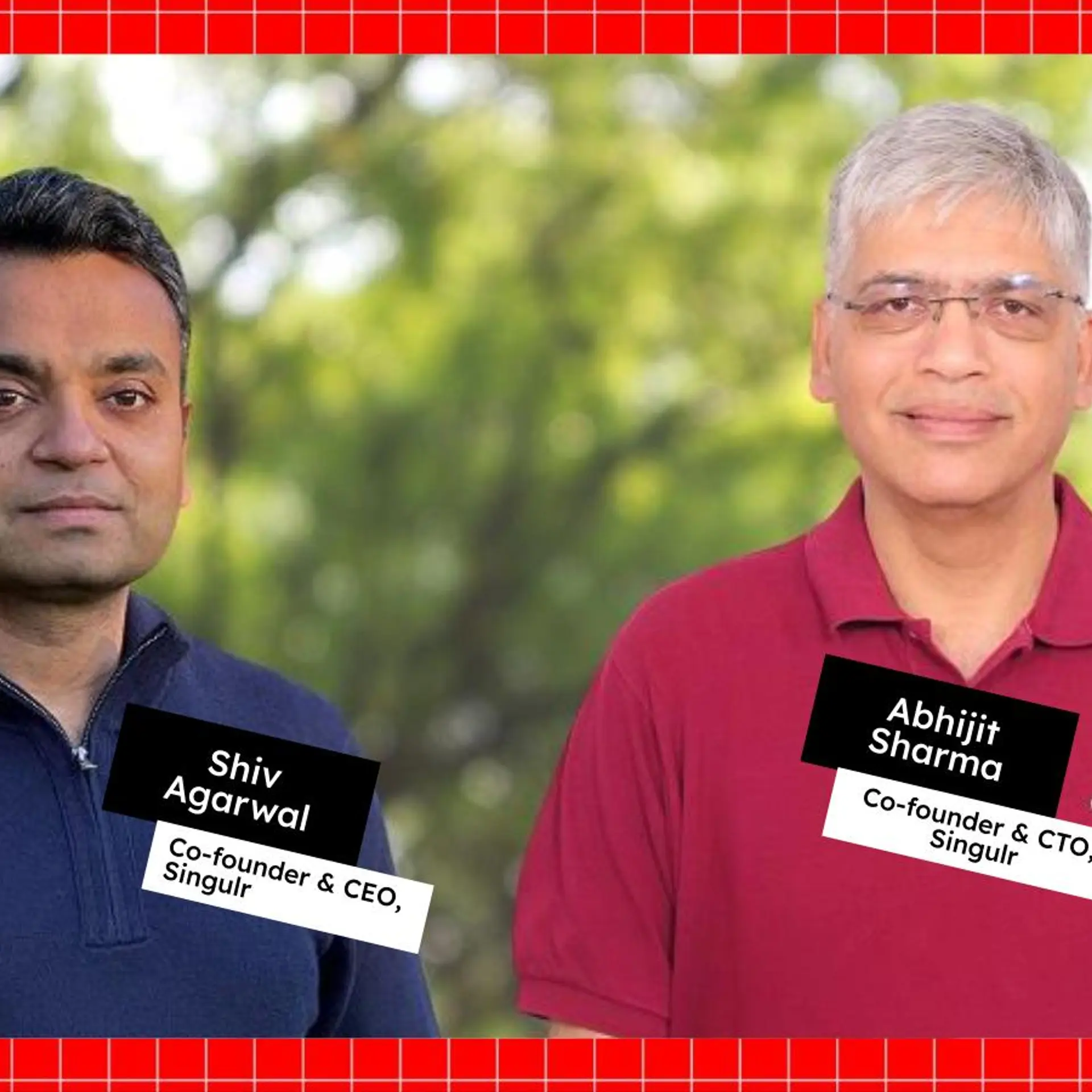5 critical business email etiquette principles you need to know
Whether you are messaging a coworker, a new intern, or even Bill Gates, following these email principles will maximise your chance of engagement with your email recipient. Business communication has evolved tremendously, with extensive use of collaboration and project management tools like Slack, and Trello.
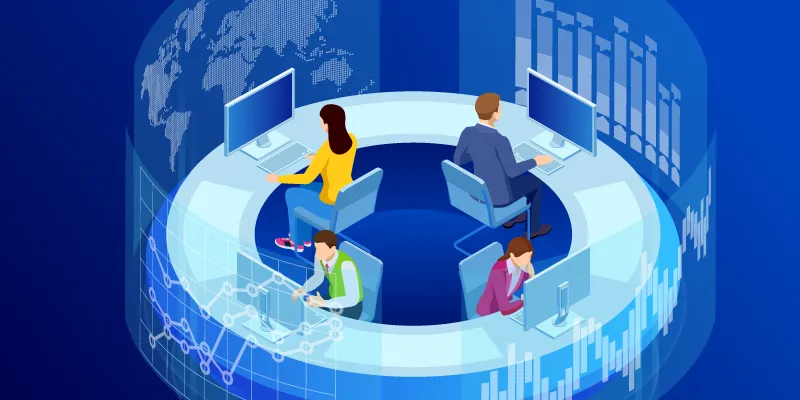
However, for most professionals, email still occupies a significant part of the workday. By the end of 2019, Radicati expects worldwide email users to grow to over 2.9 billion. So if your email etiquette is on point, you ensure that people are happy to correspond with you.
You might think, yeah well, a typo is okay. But guess what? If you send an email with errors, then the recipient might consider you as less intelligent, conscientious, and trustworthy.
Here’s a look at the top five email etiquette principles you should know as a professional.
1. Follow this copywriting adage about the audience
You might have read rules like “never use emojis in professional communication” and “avoid salutations.” The best strategy for writing an email, though, is something that’s also prevalent in ridiculously great copywriting examples. It is - understanding your audience.
So get in the shoes of your audience and find out the kind of language your recipient likes and uses in their daily life.
● Are they extremely polite?
● Do they like superheroes?
● Do they love emojis?
For instance, if you’re emailing a standup comic for booking a corporate show, then you don’t need to “keep it formal.” Indeed, an informal tone might work better for persuading them to work with you.
How can you communicate in your recipient's language? If you have a past relationship with them, then you understand their personality and the kind of words they use. But what if you’re cold-emailing? Here’s an example of a bad cold email pitch that content marketing consultant Shreya Dalela shared with me. She is a top writer on Medium, so a website ‘loved’ what she wrote, and wanted her to write for them.
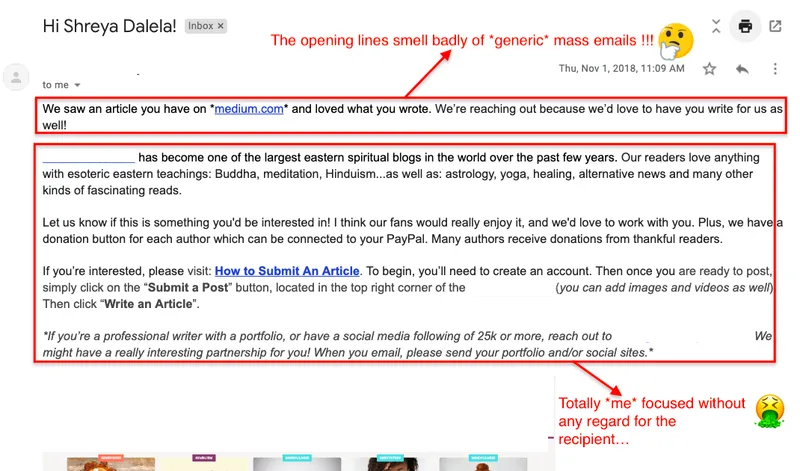
Even in the case of cold emails, you should try to personalise your message by researching relevant information about your recipient. You will find traces of their life and how they communicate on social media platforms. Talk in the language they use and tell them the benefits of your pitch.
If you are short of time, then you can use a tool like Crystal. It offers personality insights about your recipient from the public information they have shared. Here’s a little something about Elon Musk.
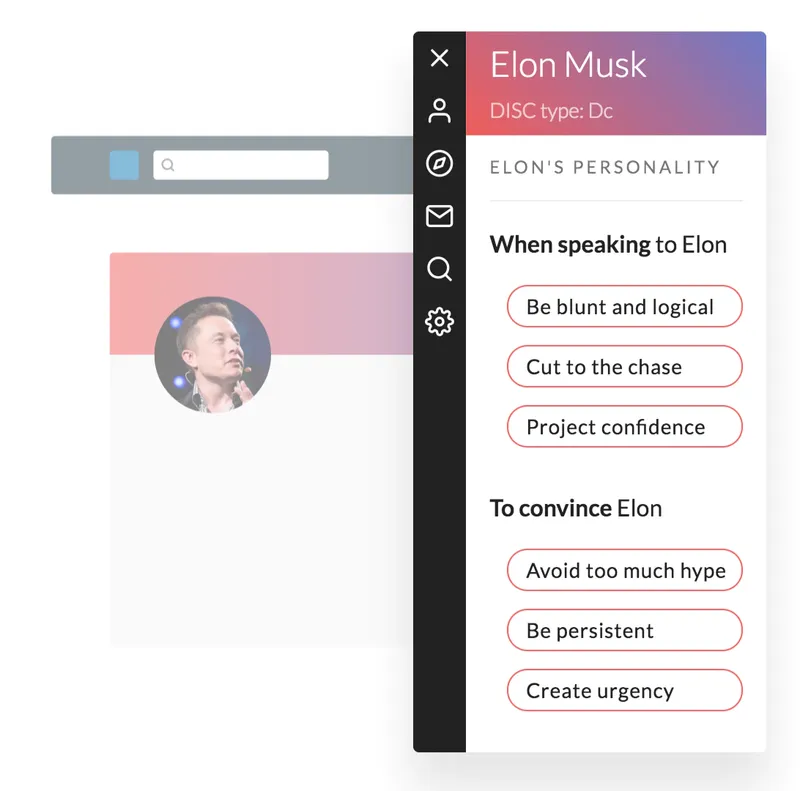
2. Emailing bigwigs? Then, prescribe to their guidelines (if available…)
Influencers, executives, and big shots are generally open to networking with professionals that can improve their business and everyday life. However, they receive hundreds of emails every day.
To get their attention, double checking spellings, grammar, and punctuation in your email isn’t sufficient. The stakes are much higher. You need to prescribe to their email guidelines before pressing the ‘send’ button.
For instance, Tim Ferriss publicly declared that he’s taking a break from investing in new startups. Moreover, he’s no longer accepting pitches and introductions. As a professional, it would be discourteous to send your 10-page deck in his inbox now.
Similarly, Neil Patel had laid down on his older Quick Sprout contact page that he doesn’t respond to emails on product launches, advertising opportunities, and the like.

He’s even given specific instructions stating your message shouldn’t run beyond a paragraph. You need to respect these guidelines.

If you are emailing a senior executive at your company, then you can research them through your colleagues. Maybe, they attended an industry conference and shared an anecdote from their favourite speaker. You can refer to such updates to personalise your communication.
Also, before you facilitate networking between two professionals, it’s courteous to ask them separately if they are open for an introduction. Recently, I requested an influencer to connect me with their friend looking to work on content projects. He didn’t send a connection email to both of us straightaway. He first asked his friend if “he’s up for an intro.”

3. Keep your emails short
After content marketer and blogger Ryan Robinson, published his ultimate guide to starting a blog, he was looking out for guest posting and backlinking opportunities. He knew that establishing partnerships with other authoritative websites would be a major factor in getting his article to rank well in organic search eventually.
Do you know the kind of outreach emails that he found were most likely to convert into a guest post or partnership? Ones that were three sentences in length, with a clear and concise subject line that got straight to the point.
Here’s Robinson’s advice you could use, “Treat your recipients like the busy people they are. We all have a growing mountain of tasks and to-dos throughout our day. So the quicker you can illustrate how your pitch stands to be a win-win deal for your prospect, the better. From there, it’s your job to reduce any friction with getting your ask completed, so there’s no reason for the deal not to materialize.”
A Boomerang analysis of 40 million emails matches Ryan’s findings. They found that emails between 75 and 100 words get the highest response rate at 51 percent.
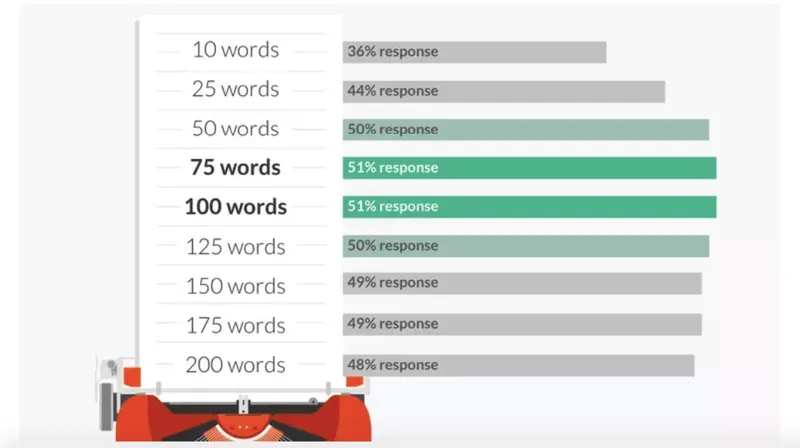
It also makes sense. If you use 1,000 words to describe how your agenda is beneficial to the recipient, then you weaken your argument.
By keeping it crisp, specific, and direct, your message will stand out in the sea of poorly written long emails.
Also, when updating your manager about a task, it doesn’t require her response, then you can state the same. End your message with “I don’t expect a response,” and save the overhead for both of you.
Note: In certain situations, it makes sense to clarify your pitch and write long emails. For instance, Laura Lopuch sent long cold-emails to scale her copywriting business by 14x. However, her emails were relevant, targeted, and personalised.
4. Email is not a real-time communication medium
In his book Essentialism, author Greg McKeown shares the importance of setting boundaries to prevent your time from getting hijacked. With email, there’s a tendency to respond immediately for fear of being judged as an unprofessional.
However, unless you’re chasing an urgent project deadline, you don’t need to respond to emails right away. Depending on your existing relationship with the sender and the nature of the message, you can take between 12 hours and 24 hours.
If your manager emailed you a question, you might feel an urge to send an immediate answer. Remember, though, that it’s on you to set expectations on the timescale of replying. Delaying your response allows you to prioritise and work on the important tasks over urgent.
I was recently working with a website owner who treated email as a real-time communication medium. Here’s an email chain in which he responded before even reading my email in full. Note the thread of email replies have happened with a lag of 2 minutes.
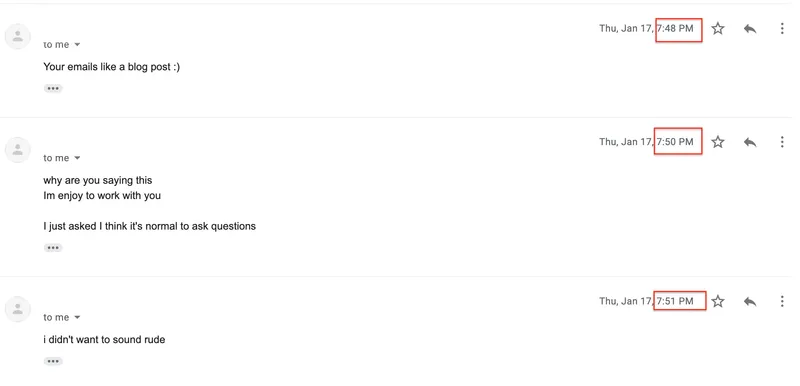
No wonder, I’ve broken up with the client in which a significant factor was their annoying style of communication.
5. It always makes sense to take it offline
Email is primarily a textual communication medium and devoid of emotional undertones. Sure, you can use emojis and bold words for conveying emphasis, but the scope is limited.
Your electronic audience might not comprehend the sarcasm in your email because they “hear” it differently as per research. Indeed, most people overestimate the effectiveness of their text communication.
What’s the solution? Set up a quick meeting offline. When dealing with strangers, a face-to-face request is 34 times more likely to convert over email. So before you send your next email, ask yourself if it’s possible to meet offline. Else, try to schedule a five-minute phone call.
Even when sending an email for internal business purposes, you should request a physical meeting. For most professionals, email is a supplement to the knowledge work they pursue - treat it as a supplement that enables efficient workflow.
Final thoughts
Mark Patchett, Founder of The Ecommerce Academy, has the perfect piece of parting advice. He believes that “email is essentially a sales pitch to get someone's time.” Hence, whether you are messaging a coworker, a new intern, or even Bill Gates, Mark recommends these five tips:
● Be authentic,
● Be clear about the value they’ll get from reading the email,
● Take advantage of formatting and hooks to get people interested and keep reading,
● Be clear about anything you need as a follow-up,
● Articulate what’s in it for them to follow up
In the end, email is not the ideal medium to communicate your ideas. However, it need not hurt your credibility. If you follow the simple principles of clear and effective communication as outlined in the article, then you can use it wisely to get more work done.
Are there any other email etiquette principles you recommend following for effective communication? Let me know in the comments below.
(Disclaimer: The views and opinions expressed in this article are those of the author and do not necessarily reflect the views of YourStory.)







